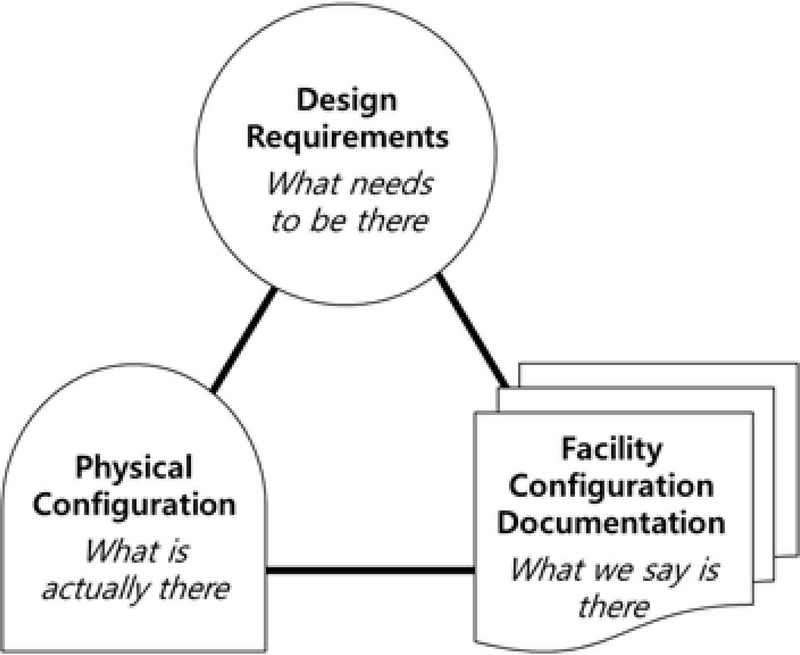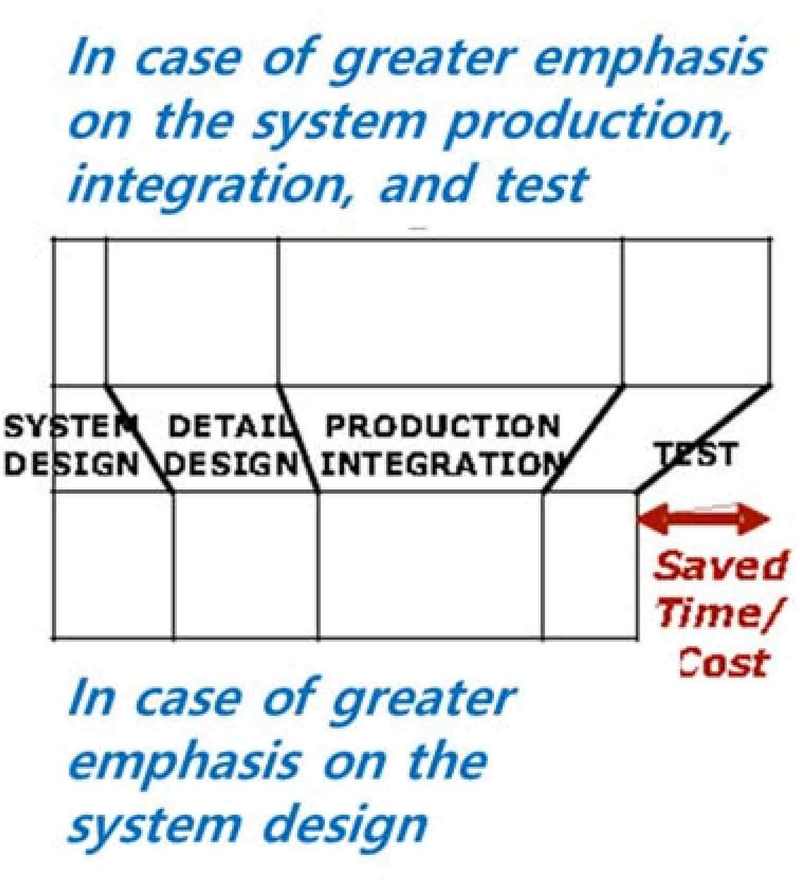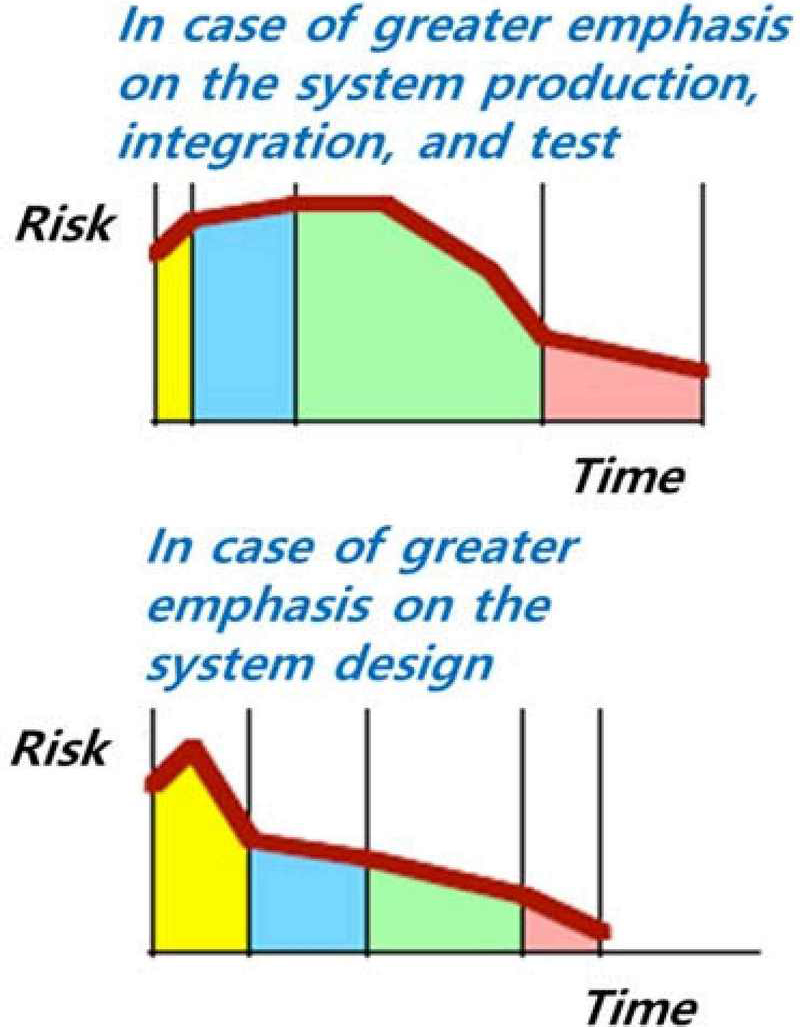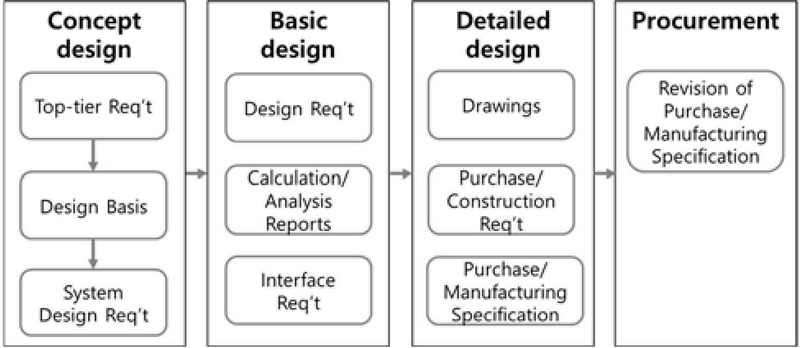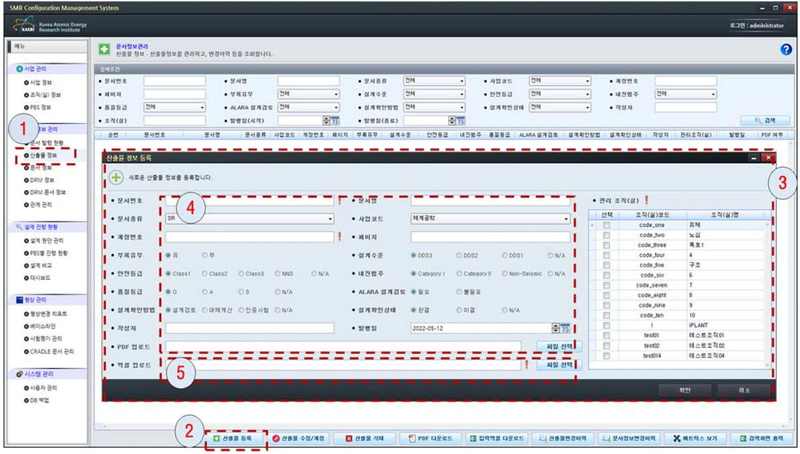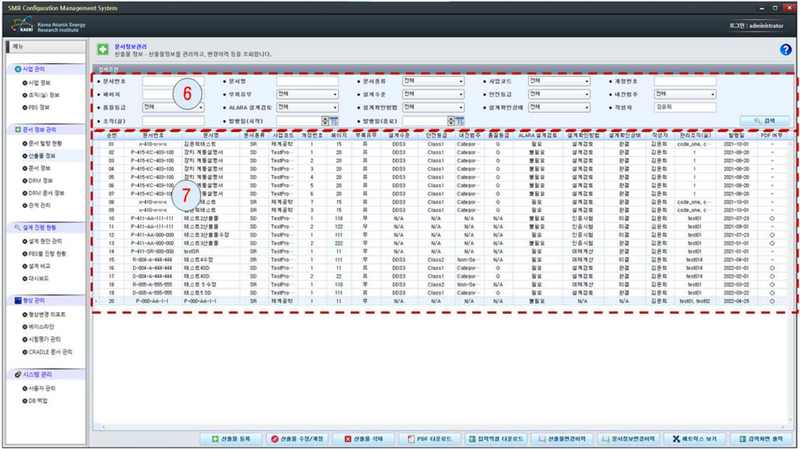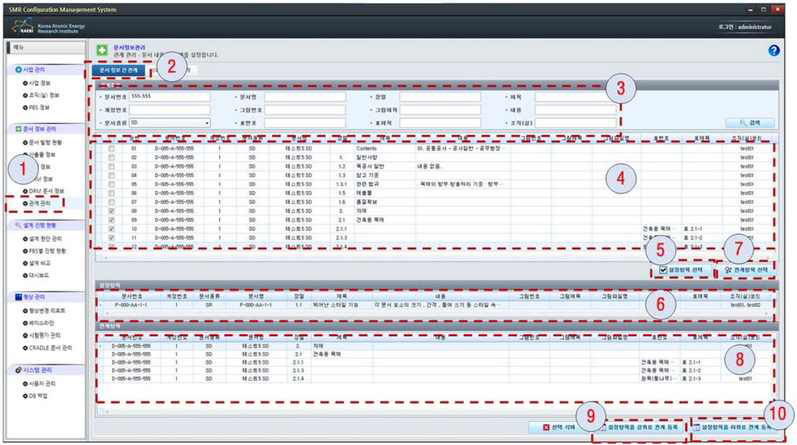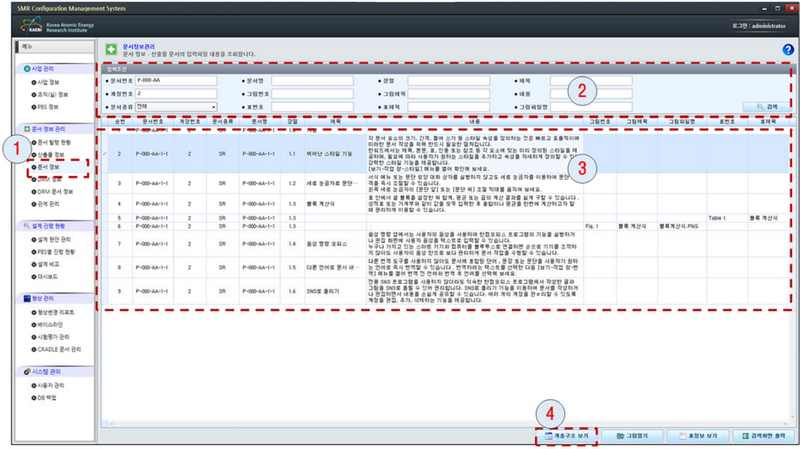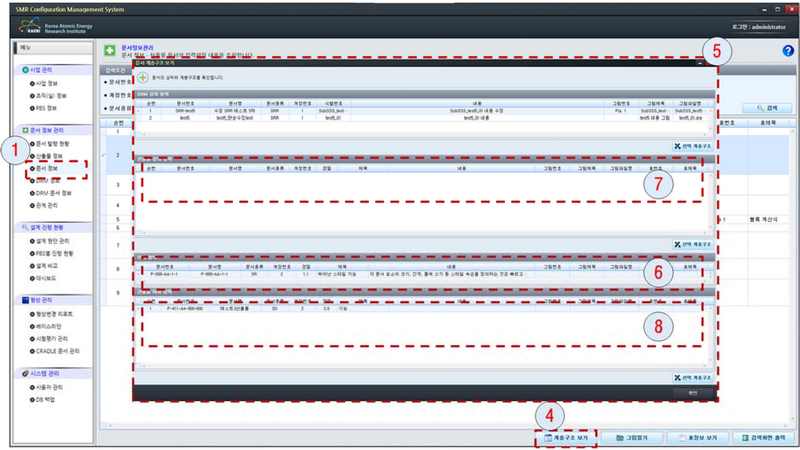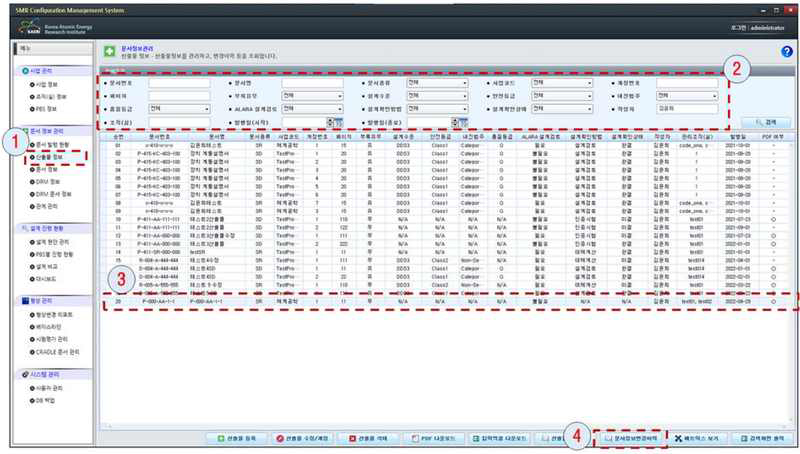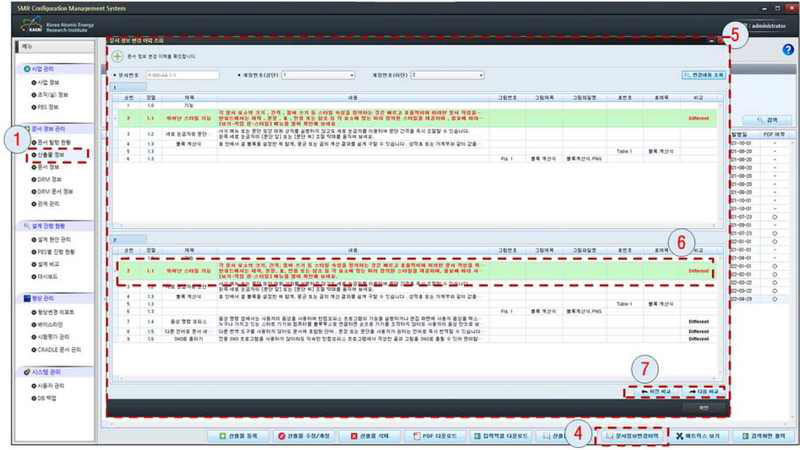
Development of design configuration management system for large-scale complex system (LaDCoM)
Copyright © The Korean Society of Marine Engineering
This is an Open Access article distributed under the terms of the Creative Commons Attribution Non-Commercial License (http://creativecommons.org/licenses/by-nc/3.0), which permits unrestricted non-commercial use, distribution, and reproduction in any medium, provided the original work is properly cited.
Abstract
A large-scale complex system (LSCS) is an engineering product characterized by numerous components and a structure of interconnected subsystems. The construction of the LSCS proceeds through the stages of design, manufacturing, integration, and testing. The design stage requires the application of engineering technologies from various fields across multiple design statuses. In the design stage of LSCS construction, tasks from various engineering fields are linked based on the design status, and numerous design documents are generated. The results must be systematically managed to ensure design consistency because they are connected in a complicated manner. In this study, a large-scale complex system design configuration management system (LaDCoM) that applies the concept of configuration management to the design stage of LSCS construction is proposed. If the LaDCoM adops the design of the LSCS, then the design quality is expected to be improved rapidly and the consistency of the design results obtained various engineering fields and multiple design statuses verified accurately. Furthermore, the use of the LaDCoM is expected to conserve time, save costs, and reduce risks in the entire stage of LSCS construction.
Keywords:
Large-scale complex system, System design, Configuration management, Design consistency, Design quality1. Introduction
A large-scale complex system (LSCS) is an engineering product characterized by numerous components and a structure of interconnected subsystems. The LSCS appears in various engineering fields, such as shipbuilding, energy, power systems, manufacturing, aerospace, civil and construction engineering, and transportation [1]. In the development of LSCSs, engineering technologies from various fields, such as mechanical, structural, material, fluid, measurement and control, and human engineering, are combined based on the characteristics of the LSCS, and the work in these fields generates numerous design documents. The LSCS is physically built through the manufacturing and integration stages based on the results from the design stage. Once completed, the LSCS is operated for a long period while it undergoes regular and irregular maintenance. The LSCS undergoes rapid and accurate maintenance through change to equipment and components to maintain its required performance during long-term operation. Occasionally, it undergoes design changes to introduce new technologies to improve performance. Configuration management is required to apply the operation process mentioned above to ensure consistency with existing facilities and designs and to maintain performance and safety throughout the life of the LSCS. In LSCS-related industries, configuration management is being applied or attempted to be applied. However, as the focus is on the application to the operation of the LSCS, configuration management is primarily performed between the design results and the stages of integration, testing, and operation. In this study, we confirmed that the application of configuration management is emphasized more in the design stage than in the manufacturing, integration, and testing stages among all the construction stages of the LSCS, thus, we developed a large-scale complex system design configuration management system (LaDCoM) for application in the design stage.
2. Configuration Management in Large-scale Complex System
Configuration management is the process of identifying and documenting the characteristics of a facility’s structures, systems and components (SSCs) and ensuring that consistency is maintained among the design requirements, physical configuration, and facility configuration. The concept of configuration management recognizes that three elements must be in equilibrium, as shown in Figure 1 [2]. Design requirements are technical requirements derived from standards, regulatory requirements, and limitations inherent in the design process, such as the consideration of margins and uncertainties that must be reflected in the design documentation. Facility configuration documentation is a set of documents that contains configuration information defining the design, operation, and maintenance of a plant. The physical configuration applies to the installed and subsequently implemented SSCs as well as to the operational configuration of those items [2].
Achieving consistency among design requirements, physical configuration, system operations, and facility configuration documentation offers contributes significantly to the safety and efficiency of the LSCS. Effective implementation of the configuration management process in the LSCS provides the tools and information necessary for integrating and coordinating activities to ensure that work in the construction process is performed correctly and safely for the first time [2].
Because of these advantages, various attempts have been realized to apply configuration management to the construction and operation processes of the LSCS. The nuclear industry is actively applying configuration management to operate nuclear power plants [3]-[7]. In the domestic nuclear power industry, since the application of configuration management to some components of the systems of Hanbit Unit 3-4 in 2006, configuration management has been applied to nuclear power plants in operation [8]. Currently, efforts are being expended to apply configuration management to nuclear power plant design, and the development of a configuration management information system for Shinhanul Unit 3-4 is being promoted to improve design quality including preventing design errors.
3. Configuration Management Model for Design Stage
3.1 Necessity of Configuration Management for Design Stage
The LSCS, in which various subsystems are organically linked to achieve its purpose, has been used to focus manufacturing, integration, and testing, thus revealing the physical features throughout the LSCS construction. However, if we emphasize the design process more than the manufacturing, integration, and testing processes, then the integration and testing stages can be conducted rapidly and easily. In other words, if the design stage is emphasized during the entire LSCS construction, then the consistency and completeness of the LSCS will increase, thus, an overall high-quality LSCS can be constructed in a time-conserving and cost-saving manner, as shown in Figure 2 [9]. By discovering and reducing potential risks early during the integration and testing processes, we can reduce the construction costs and shorten the schedule by preventing problems, as shown in Figure 3 [9].
3.2 Characteristics of LSCS Design Work
To apply configuration management to the design stage, one must analyze the characteristics of the LSCS design work. The design of an LSCS can be categorized into three statuses: concept design, basic design, and detailed design statuses. The main tasks for each status are as shown in the Table 1.
3.3 Configuration Management Modelling at Design Stage
The configuration management at the design stage verifies whether the design results satisfy the design requirements, as shown in Figure 4. In LSCS construction, two or more engineering fields are typically required to collaborate to satisfy the design requirements. One must ensure that the results of such collaborations are maintained without consistency loss as the design status progresses. Therefore, procedures and support systems are required to verify whether the results of collaboration across works from multiple engineering fields are consistent throughout the design statuses.
The design data generated for each design status are issued and managed as design document units. A review and verification of whether the design results of the collaboration in engineering fields are consistent through the design statuses are primarily conducted based on the issued design documents.
In the concept design status, top-tier requirements reflecting related laws, technical standards, quality requirements, and user requirements are determined, and design criteria documents, such as design basis reflecting reference systems’ design and design experiences, are issued. Based on these design criteria documents, the system design requirements that should be reflected in the overall system aspect based on the top-level requirements are created, and design documents that determine the function, composition, appearance, and size of the system are generated based on the system design requirement documents.
In the basic design status, the design requirements that should be reflected in the subsystem based on the system design requirements, design calculation and analysis reports, interface requirements, and other design documents for implementing the functions of the LSCS are created based on the concept design results.
In the detailed design status, the design of SSCs is finalized and design documents such as specifications, detailed drawings, and documents required for purchasing, construction, and operation are created.
If the configuration management concept of the design stage shown in Figure 4 is applied to the LSCS design stage described above, then it can be expressed as shown in Figure 5.
4. Development of Prototype of LaDCoM
4.1 Functions of Design Configuration Management System
The LaDCoM proposed in this study aims to improve design quality by verifying the consistency between design information generated from various engineering fields and the consistency between design information generated from the design statuses. The main function of the LaDCoM is to verify the consistency of the design data. To implement this function, the design data and information are stored in the LaDCoM as document units, a relation is defined between the design results resulting from different engineering fields, and obtained from different design statuses. The functions implemented to achieve the aims of the LaDCoM are listed in Table 2.
4.2 Screen Composition for Main Functions of LaDCoM
In this section, the screens used to implement the main functions of the LaDCoM, which are listed in Table 2, are explained. The bullets written to explain the screen composition and operation sequence described in subsection 4.2.1-4.2.4 are identical to the numbers expressed in Figure 6-Figure 12.
The screen to input and search design information are shown in Figure 6 and Figure 7. Information regarding the issued design documents is stored in the LaDCoM. Because only the stored contents are printed, the information expected to be searched is derived in advance to avoid omissions during input. The screen is operated as follows:
① Select the menu “Design document information.”
② Click the button “Input design information.”
③ A pop-up screen to input the design information appears.
④ Input design information such as the document number, document title, and design status.
⑤ Input the information of the design documents in the form of an Excel file.
⑥ Search for the desired design information in the search condition input window.
⑦ The search results of the output are displayed in the search results window.
The screen used to set the relation between the design information is shown in Figure 8. This function is implemented to define the hierarchical relation between the design information.
One piece of the design information (A) is the role of requirements to others (B), or one piece of design information (B) is a technical basis for others (B). This screen is used to set the hierarchical relation between design information (A) and (B). The screen is operated as follows:
① Select the menu “Management relation.”
② Select the menu “Relation between design information.”
③ Enter the search conditions.
④ When the design information identical to the search condition is output, select the information to which the user wishes to set a relation.
⑤ Choose the selected information as a setting item.
⑥ The selected information is shifted to “Setting item.”
⑦ Select another design information that the user wishes to relate to the information shifted to the “Setting item” by repeating steps ③-④ and click the button “Related item.”
⑧ The information selected as the related item is shifted to “Related item.”
⑨ If the user wishes to set the information of “Setting item” as the upper relation of “Related item,” then click the button “Set item as upper relation.”
⑩ If the user wishes to set the information of “Setting item” as the lower relation of “Related item,” click the button “Set item as lower relation.”
The screen used to search for the relation between design information is shown in Figure 9 and Figure 10. A hierarchical relation between design information is determined to verify the consistency between information by searching for the relation set described in subsection 4.2.3. The screen is operated as follows:
① Select the menu “Design document information.”
② Enter the search conditions.
③ When the design information identical to the search conditions is displayed, select the information for which the user wishes to verify the hierarchical relation.
④ Click the button “Search hierarchical structure.”
⑤ A pop-up screen to search for the hierarchical structure of the selected design information ③ is appeared.
⑥ The selected design information ③ is displayed.
⑦ The information set is displayed as an upper relation to the selected design information.
⑧ The information set as a lower relation to the selected design information ③ is displayed.
The screen used to search for changes in the design information between document versions is shown in Figure 11 and Figure 12. The verifiable design information is limited to the design information saved as described in subsection 4.2.1. The consistency or change history of some design information based on the design statuses can be verified. The screen is operated as follows:
① Select the menu “Design document information.”
② Enter the search conditions.
③ When the design information identical to the search conditions is displayed, select the information for which the user wishes to search for changes.
④ Click the button “History of design information changes.”
⑤ A pop-up screen to input the design information appears.
⑥ Information that has changed compared with the selected design information is expressed as “different.” Information currently being verified is shown in red and green font.
⑦ A user can only search for changes by clicking the button “Previous (left button)” and “Next (right button).”
5. Conclusion
Emphasis the design stage among the stages of the entire system construction process of the LSCS can increase its consistency and completeness. In this study, a LaDCoM was proposed to apply configuration management to the design stage of an LSCS.
The proposed LaDCoM is expected to improve design quality by rendering it easier to verify the design information generated from different engineering fields and design statuses.
The proposed system was developed for the design stage. If this system is linked to configuration management applied at a later stage, such as integration and testing processes, then configuration management in terms of the entire construction process, which aims to secure consistency between the design-physical configuration and actual product, is expected to be realizable.
Author Contributions
Conceptualization, S. M. LEE; Methodology, S. M. LEE and Y. H. Kim; Software, Y. H. Kim, J. S. Oh; Validation, Y. H. Kim, J. S. Oh, C. S. Ha; Writing—Original Draft Preparation, S. M. Lee; Writing—Review & Editing, S. M. Lee; Visualization, Y. H. Kim; Supervision, S. M. Lee and C. S. Ha.
References
-
P. P. Groumpos, “Large scale systems and fuzzy cognitive maps: A critical overview of challenges and research opportunities,” Annual Review in Control, vol. 38, pp. 93-102, 2014.
[https://doi.org/10.1016/j.arcontrol.2014.03.009]

- IAEA, Application of Configuration Management in Nuclear Power Plants, Safety Reports Series No.65, International Atomic Energy Agency, Vienna, 2010.
-
C. Zhou, L. Qi, X. Liu, and H. Bo, “MRO configuration management for complex products”, Journal of System Science and System Engineering, vol. 31, no. 3, pp. 359-380, 2022.
[https://doi.org/10.1007/s11518-022-5524-x]

-
M. Y. Kang, Y. Jeong, and Y. Jung, “Assessment methodology of practical configuration management for sustainable nuclear power plants (NPPs),” Sustainability, vol. 11, no. 8, pp.2391, 2019.
[https://doi.org/10.3390/su11082391]

- Y. Park, “Research integrated change process for configuration management of construction nuclear power plant,” Proceedings of the Korean Institute of Building Construction Conference, vol. 6, no. 1, pp. 231-232, 2016 (in Korean).
-
M. Y. Kang and Y. Jung, “Framework & functions of configuration management in nuclear power plants (NPP),” Korean Journal of Construction Engineering and Management, vol. 16, no. 3, pp. 101-112, 2015 (in Korean).
[https://doi.org/10.6106/KJCEM.2015.16.3.101]

- J. H. Song, Y. J. Choi, and H. Y. Cho, “A study on configuration management system for unmanned aircraft system development”, Journal of Aerospace System Engineering, vol. 9, no. 4, pp. 8-15, 2015 (in Korean).
- KINS, Study on Establishment of Regulation Policy for the Reinforcement of Configuration Management and Application in Nuclear Power Plants, KINS.GR-546, Korea Institute of Nuclear Safety, Republic of Korea, 2013.
- E. C. Honour, “Technical Report Value of Systems Engineering,” Air Force/Lean Aerospace Initiative Workshop on Systems Engineering for Robustness, 2004.
- INPO, New Plant Configuration Management Development and Implementation Process, AP-932, Institute of Nuclear Power Operation, G.A. USA, 2009.

